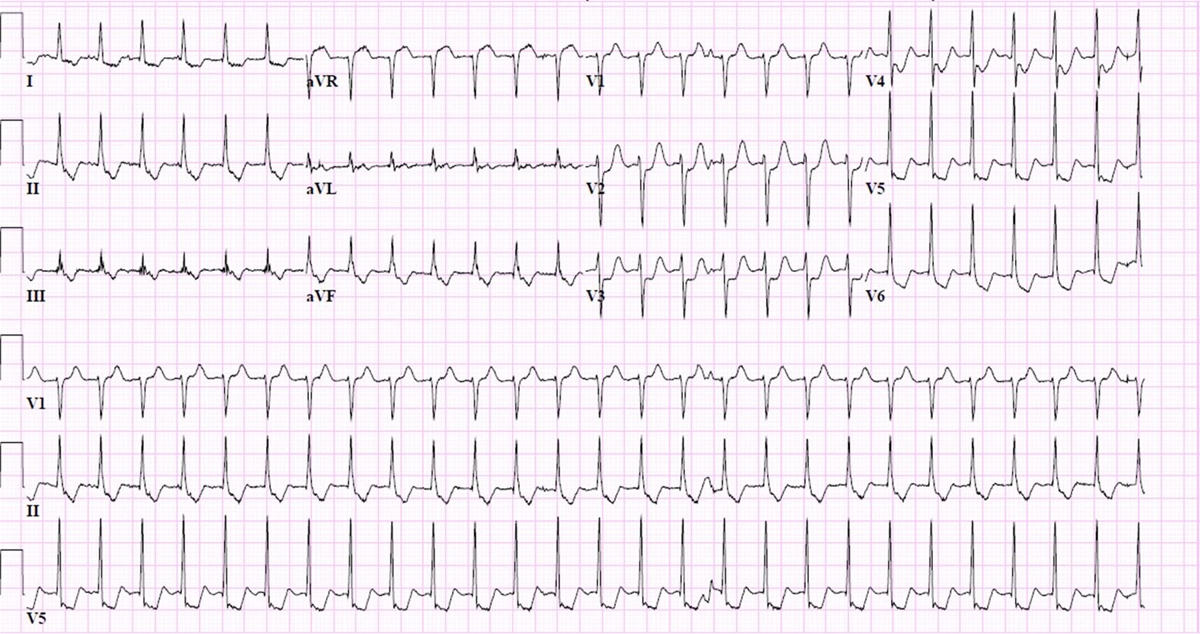A 28-year-old woman comes to the emergency department due to the abrupt onset of palpitations that started while she was watching television. She says, "I suddenly started to feel like my heart was racing." The patient describes mild lightheadedness but no chest pain, shortness of breath, or syncope. In the past, she has experienced similar episodes of palpitations that were nonsustained and terminated abruptly. The patient has never sought medical care for these episodes and cannot identify any provoking factor. She saw a physician for anxiety when she was a teenager but does not remember if she received any therapy. The patient has no other medical problems and takes no medications. She does not use tobacco, alcohol, or illicit drugs. She jogs 2-3 miles a day. The patient has no family history of coronary artery disease, cardiomyopathy, blood clots, or sudden cardiac death. She appears mildly uncomfortable but not in any respiratory distress. Temperature is 36.7 C (98 F) , blood pressure is 100/60 mm Hg, pulse is 172/min, and respirations are 20/min. Urine pregnancy test is negative. ECG is shown in the exhibit. The patient receives antiarrhythmic therapy, and her pulse immediately decreases from 172/min to 68/min. The palpitations resolve, and she states that she feels "normal now." Cardiac examination reveals no murmurs or additional sounds. A 12-lead ECG is performed and is shown in the exhibit.  Which of the following is the most likely diagnosis?
Which of the following is the most likely diagnosis?
Definitions:
Cross-Cultural Training
Educational programs designed to inform and prepare individuals for effective interaction and work in different cultural settings.
Awareness
The state or ability to perceive, to feel, or to be conscious of events, objects, thoughts, emotions, or sensory patterns.
Culture
The shared values, beliefs, behaviors, and norms within a group, organization, or society that shape its identity and practices.
Host Country
A country (other than the parent country) in which an organization operates a facility.
Q3: A 28-year-old woman with a diagnosis of
Q7: The delivery of quality, cost-effective healthcare is
Q11: The following statement(s) can correctly be made
Q15: An 8-month-old boy with sickle cell disease
Q28: A 23-year-old man is brought to the
Q62: A 25-year-old woman comes to the physician
Q127: A 35-year-old man comes to the office
Q441: A 30-year-old nulliparous woman comes to the
Q941: A 38-year-old woman comes to the office
Q1121: A 32-year-old man comes to the office